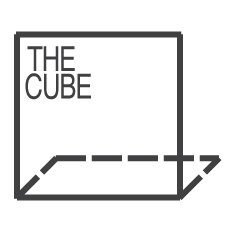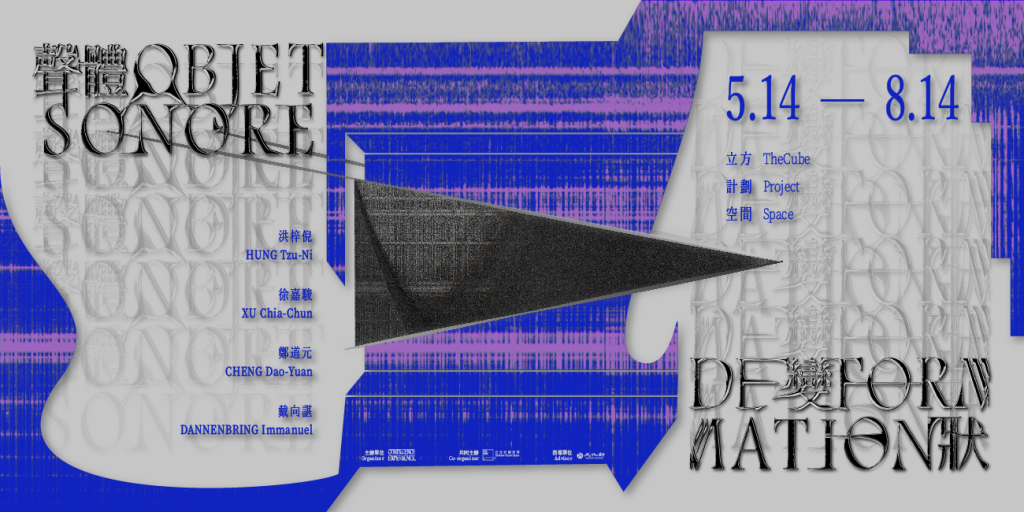
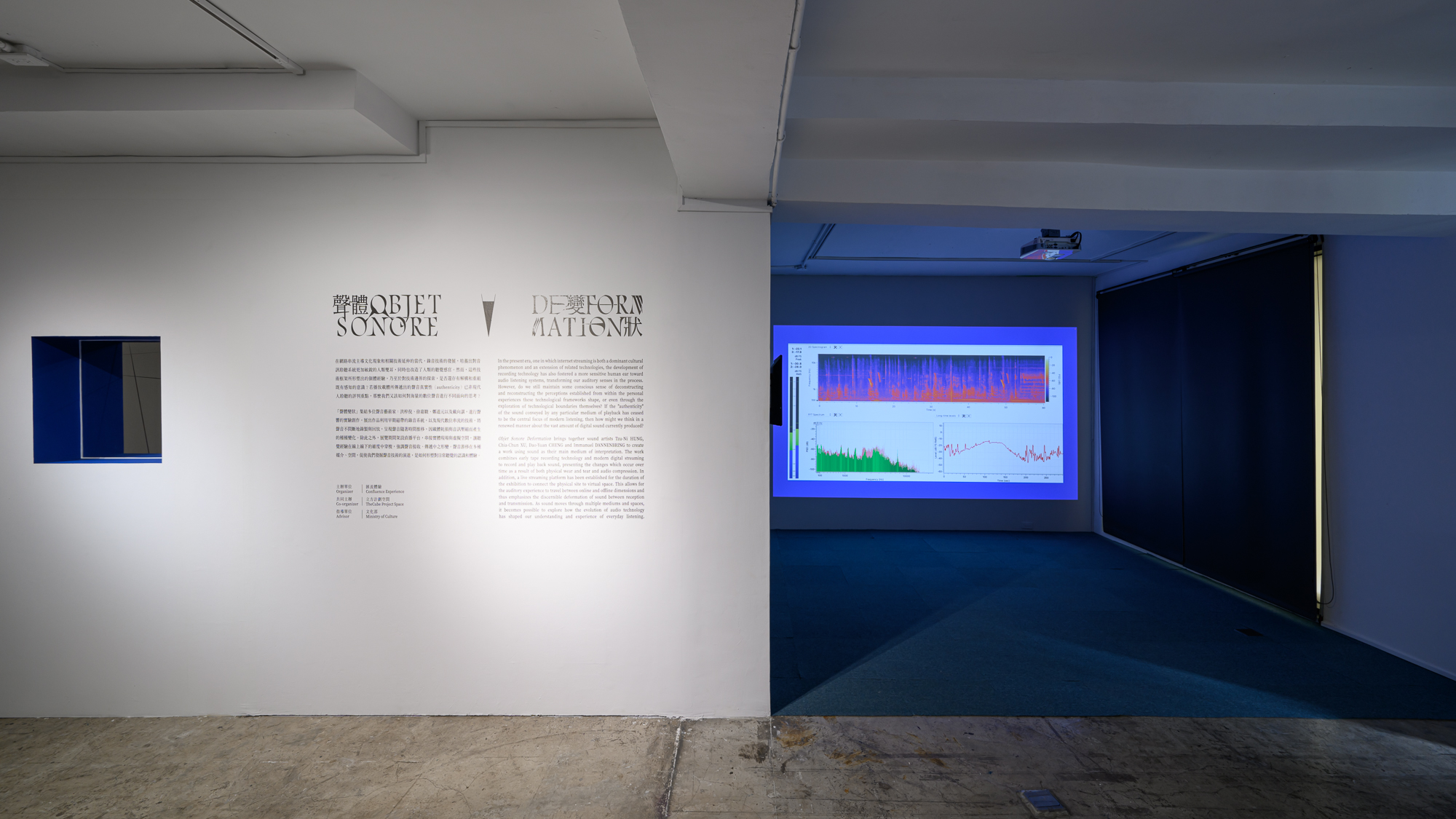
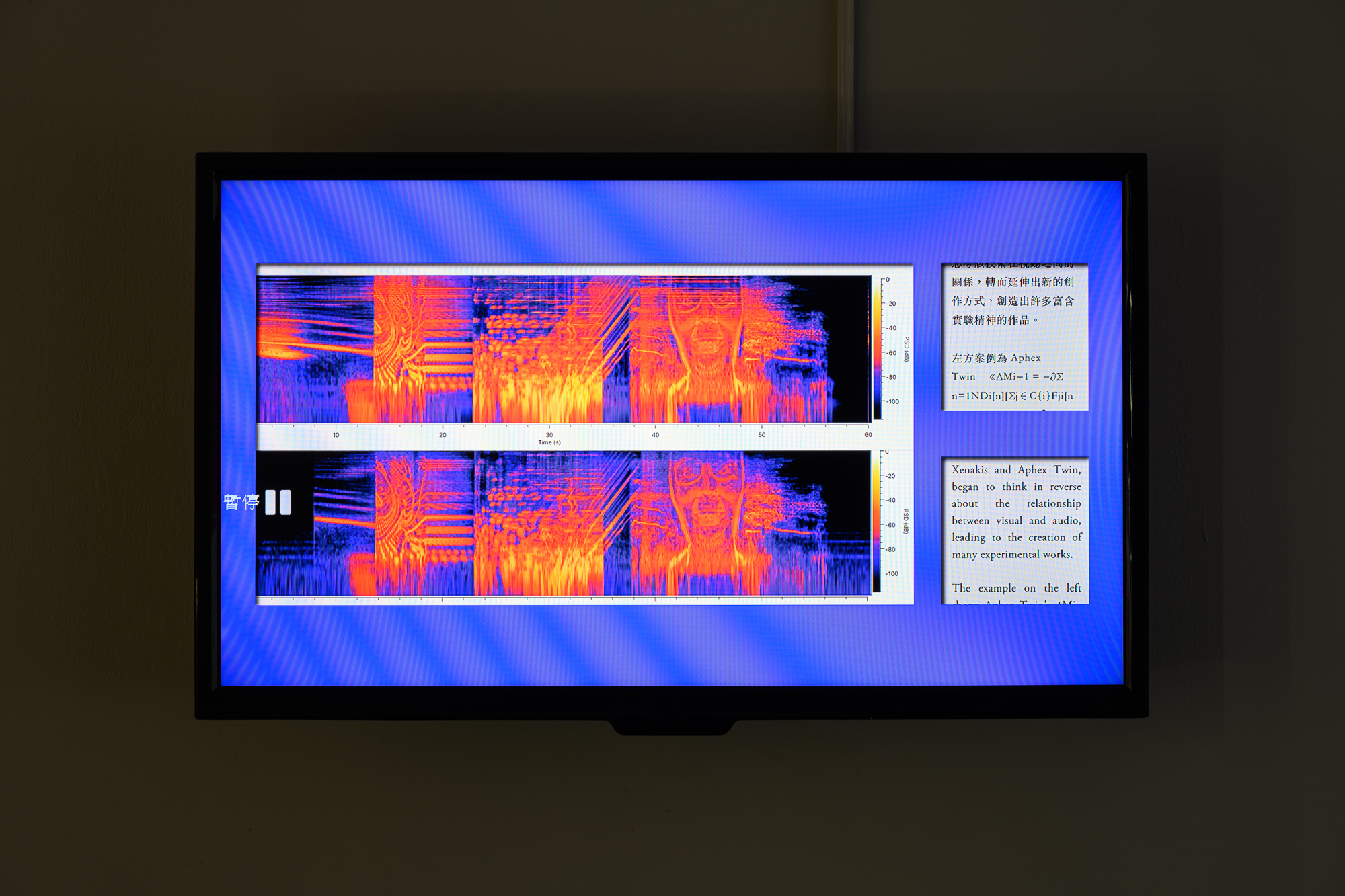
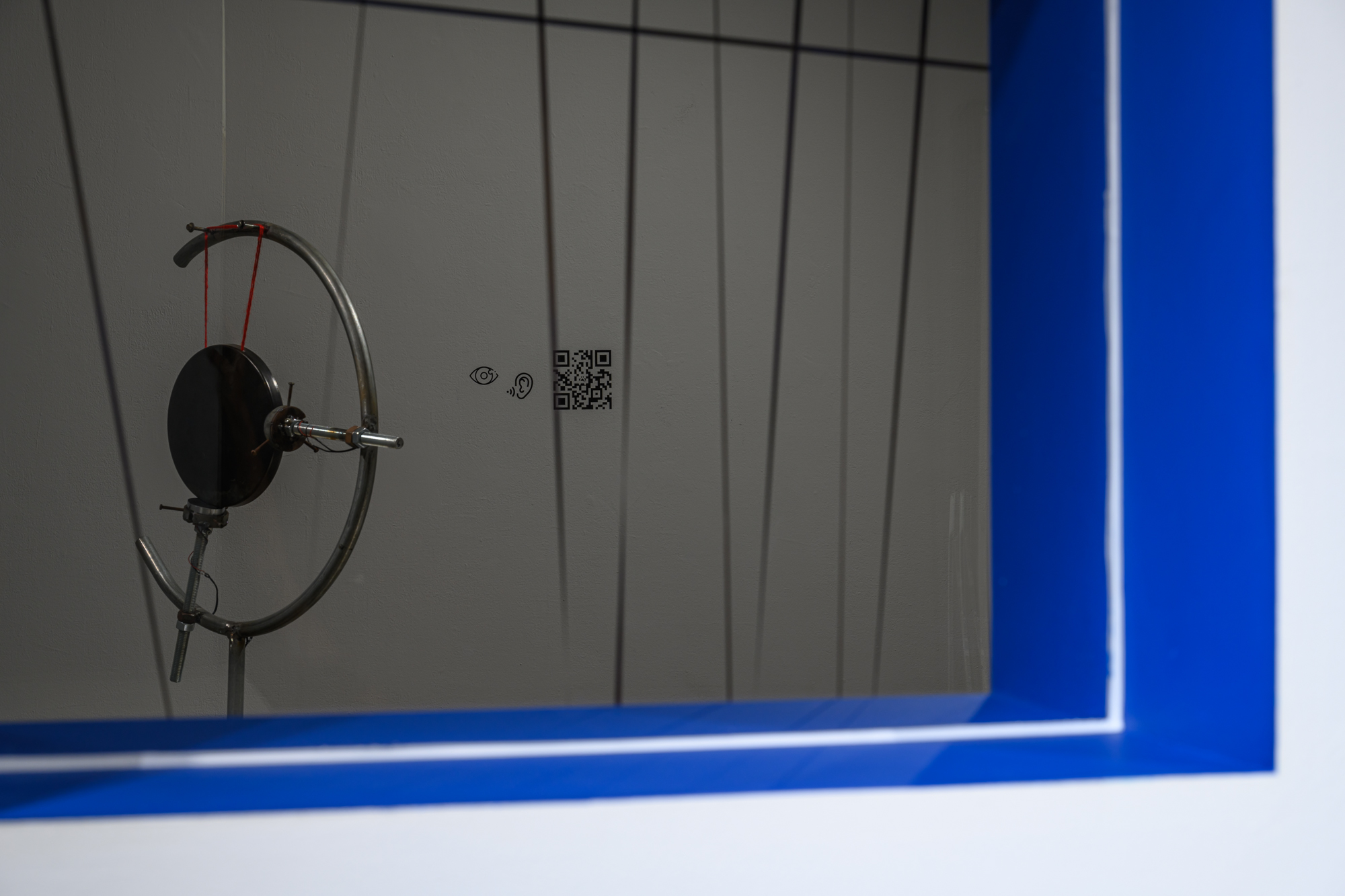
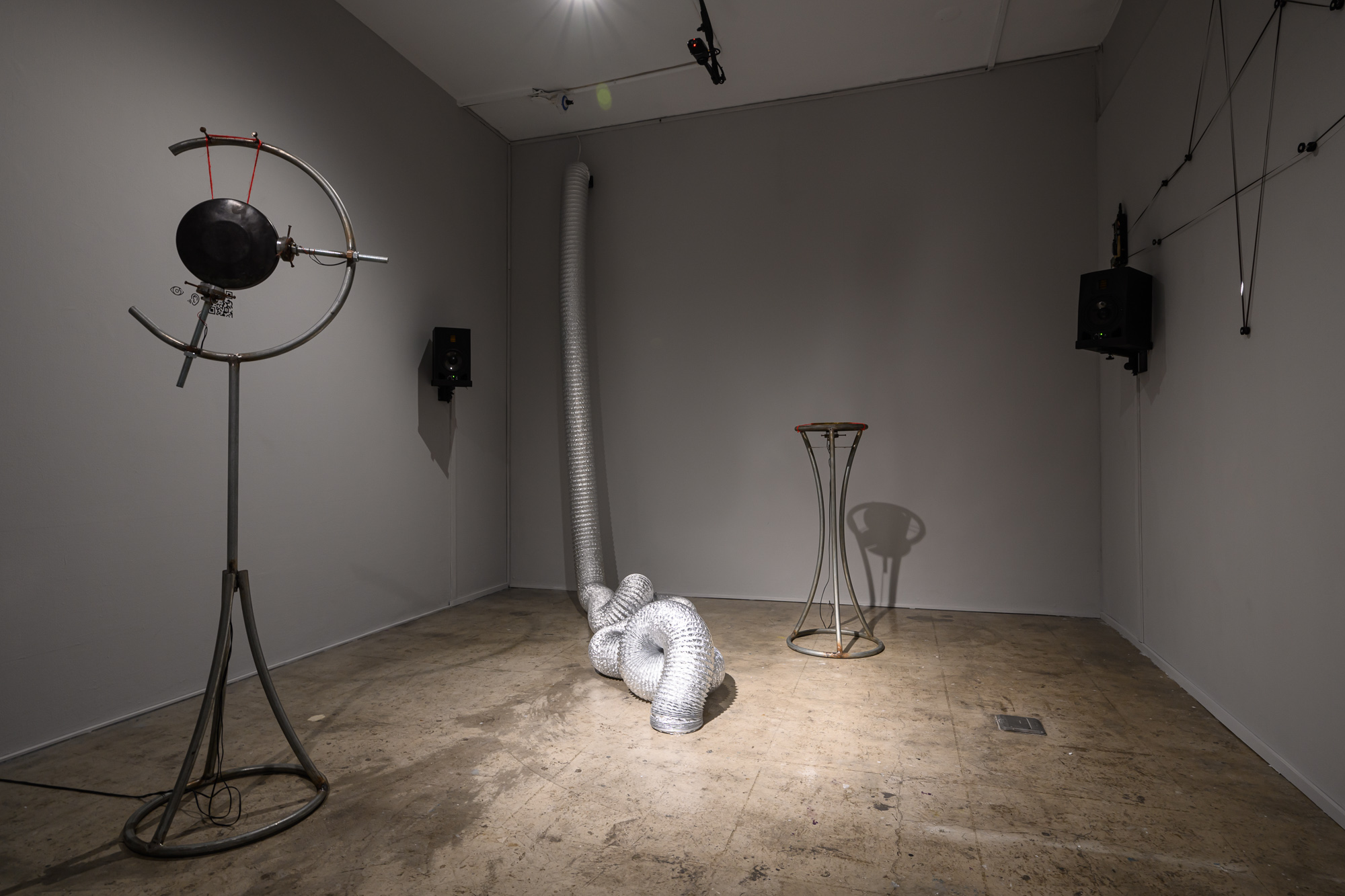
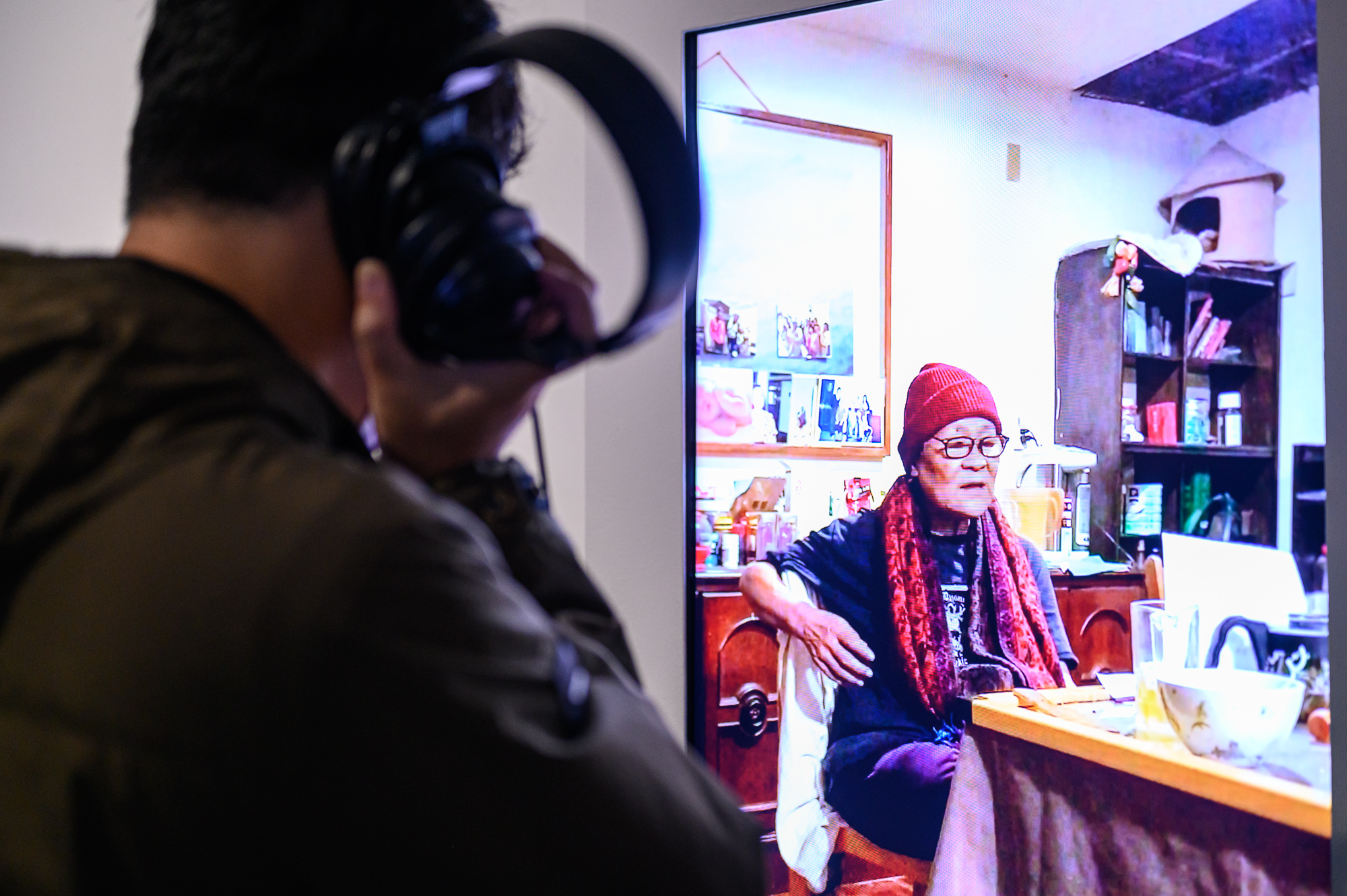
Since its inception, TheCube Project Space endeavors to constantly develop its research in the area of sound culture and has been building up collaborative projects with sonic artists and practitioners from diverse backgrounds. TheCube Project Space is pleased to present Objet Sonore Deformation with Confluence Experience, a multi-disciplinary art collective. The exhibition runs from May 14th till August 14th 2022, at TheCube Gongguan, including live performances in other venues and online.
This exhibition brings together a number of sound artists to create an experimental work combining early tape recording technology and modern digital streaming to trace a path from the generation of sound, its recording, and its audio playback directly into the listener’s present time and space. This is achieved through an uninterrupted cycle of playback, recording and online streaming, allowing for the presentation of the inevitable changes to sound caused by tape damage and audio compression that occur over time due to physical wear and tear or the stretching of playback across multiple media. In addition, by setting up a live-streaming platform to link physical and virtual space, the aural experience travels between these online and offline dimensions, emphasizing the unavoidable deformation of sound between its reception and transmission. In this way, the audience is further asked to reflect how the evolution of sound technology has shaped our understanding and experience of everyday listening.
During the exhibition, various online discussions and offline activities have been scheduled with the goal of expanding the rich and multi-layered sensory experience that this exhibition is built upon.
About the Exhibition
Text / Confluence Experience
In the present era, one in which internet streaming is both a dominant cultural phenomenon and an extension of related technologies, the development of recording technology has also fostered a more sensitive human ear toward audio listening systems, transforming our auditory senses in the process. However, do we still maintain some conscious sense of deconstructing and reconstructing the perceptions established from within the personal experiences these technological frameworks shape, or even through the exploration of technological boundaries themselves? If the “authenticity” of the sound conveyed by any particular medium of playback has ceased to be the central focus of modern listening, then how might we think in a renewed manner about the vast amount of digital sound currently produced?
The emergence of recording technology in the nineteenth century liberated sound from the abstract system that relied on visual notation. As various forms of sound transmission media became more accessible to the public, this allowed for sound to be transmitted and recorded in its own form, disrupting the relationship between people and sound. Today, electronic and hip-hop music has achieved mass popularity through its use of existing music, sound sampling, and remixing to produce tracks that are now widely accessible. However, despite the fact that recording technology has indelibly reshaped the world of human hearing, the mass reproduction and distribution of sound on vinyl, cassette tapes, CDs, and today’s digital software and streaming media — as well as the increasing sophistication of sound engineering technology — has created discernible barriers between people, recording technology and communication media.
The concept of “L’Objet Sonore” (Sound Object) was introduced by composer and founder of Musique Concrète, Pierre Schaeffer, in 1948. Before this point in time, sound was thought to exist in a relatively abstract and extrinsic form. With the advent of recording technology, the creation and reception of sound were no longer bound to the site of its performance, and the recorded sound came to be conceived of as a concrete object in and of itself one independent from the processes of documentation and reproduction. Despite this development, at the time when Schaeffer presented his renowned concept, it was still regarded as an innovation primarily from the composer’s point of view. However, when regarded from a more contemporary perspective, even though recording technology has to some extent mastered the objective conditions of the recording process, the subjective choice of sound modulation, the spatiotemporal dynamics of any given environment, and the kinds of equipment selected, all have a significant impact upon the outcome of a recording. Furthermore, across various forms of playback, the audience’s ability to listen can be affected as sound is, for example, deformed and distorted by the hiss and frequency response of analog media, different digital decoding systems, and digital streaming, or the differing compression ratios of various platforms. Moreover, as listeners, individual audience members are each unconsciously involved in the process of modifying sound through their choice of playback equipment or their desired listening method.
From another perspective, the popularization of recording technology and the mass distribution of recordings has led to the appearance of a fixed, authoritative version of sound. However, the particular body of sound that has emerged as a result has done so according to the contours of contemporary conditions. It now seems that, as if provoked by the modulations of both recording and playback systems, sound has taken on an appearance of unprecedented flexibility providing a unique listening experience to each individual. For many people living in Taiwan, when hearing the piano pieces Für Elise or The Maiden’s Prayer, what first comes to mind may not be the image of a formally-dressed pianist performing in a music hall, but rather the distorted reverberations emanating from the MIDI file broadcast to indicate the imminent arrival of a local garbage truck. A feeling experienced when listening to at a live recording of a rock band in the 1970s, whether pressed onto vinyl or replayed on a streaming platform, will be hard to replicate in the minds of those who attended that live performance. Yet, at the same time, for most people who have only heard that recording through other forms of media, the authenticity of the sound is not the focus, as each moment of playback is deformed to realize a uniquely personal experience
Events
Although seemingly positioned at very opposing ends of the spectrum, “Recorded Playback” and “Live Performance” represent two forms of sound expression that may be far more intimately connected than they appear on the surface.
The earliest mediums for the transmission and storage of sound are those of the spoken word and of memory; folklore, oral histories, meaningful tales, constantly recollected and played back through acts of live narration. Crucially, within these processes of transmission, amidst ever-shifting contexts and the misplacement of memories, these sounds inevitably deform over time. From the 1950s onwards, the development of electronic music – including the emergence of Musique Concrète – has also utilized the playing back of existing recordings as a method of performance and composition, making use of speed, modulation, creative collage, and so forth. Even in today’s popular mass music market, DJs play back a variety of existing recordings and piece them together in acts of performative collage – indeed, for the audience, it seems that the authenticity of sound itself has long ceased to be a central concern. Instead, what we now expect to hear at a live performance is perhaps the personality of each performer, rendered aurally through playback processes and the unique deformations of sound that each individual artist chooses to deploy.
Live Playback: A side-Mong Tong + DJ Rex Chen
Date | May 22nd 2022 (Sun.)
16:00 Mong Tong (Gongguan’s vicinity)
16:30 DJ Rex Chen (TheCube Gongguan)
17:00 Post Performance Q&A (TheCube Gongguan)
The program begins with a “Silent Party” performance by Mong Tong in the outdoor spaces of Gongguan. Audio will be livestreamed to the audience through an exclusive online platform, offering an auditory experience detached from the listener’s immediate physical surroundings. The audience will then be lead inside TheCube Project Space where long-time cultivator of Taiwanese “Turntablism,” DJ Rex Chen, will offer up a mosaic of music and “misplaced” sound exploring the range of possibilities afforded by the concept of Musique Concrète from a contemporary perspective.
Live Playback: B side-Somanana Rain + Jyun-Ao Caesar
Date | May 28th 2022 (Sat.)
16:00 Somanana Rain + Jyun-Ao Caesar
17:00 Post Performance Q&A
Venue | TheCube Gongguan
This performance will feature folktale narrator, Somanana Rain, and experimental guitarist, Jyun-Ao Caesar; an experienced practitioner of Da-Juin Yao’s “Pan-Musique Concrète Music Theory.” They will perform together as part of Yang’s project “Anamorphosis & Metamorphosis.” In this performance the same folktale will be repeated several times, with the first repetition morphing into the second, and the second into the third, distorting the appearance of verbal sound as it oscillates between the improvisations of each performer. As such, the initial sounds of the story can escape the limits of their linguistic conventions, becoming free to transform into a purely acoustic narrative.
About the Artist
Confluence Experience
Confluence Experience is a group of interdisciplinary artists active predominantly in Taiwan. The collective consists of Tzu-Ni Hung, Chia-Chun Xu, Dao-Yuan Cheng and Immanuel Dannenbring. Backed by their respective artistic practices and an embrace of varying values and perspectives, they seek to respond to shifts in temporal contexts through interrelations between creativity, experience and technical capability.
Underpinned by this core theme, they have been curating programs consisting of exhibitions and concert events. In doing so, they hope to initiate organic links and dialogues between various sound practitioners, becoming a catalyst for re-perceiving an ever-changing world.
Official Exhibition Website| Confluence Experience
FB|Confluence Experience
Twitter|Confluence_Exp
Instagram|confluence_exp
Exhibition Team
Exhibition Coordinator | Sophie Chen
Streaming Technician | Allen Huang
Technical Execution | Mad B Ltd.
Photographer | Yu-Xun Chang
Translator | Man-Chun Chao, John Stephenson
Special Thanks | Jyun-Ao Caesar, Zhi-Ming Feng, LinWuTongLuo
Date | 14 May – 14 August 2022 (Wed.~Sun. 14:00-20:00)
Venue | TheCube Project Space (2F, No13, Aly 1, Ln 136, Sec 4, Roosevelt Rd, Taipei)
***TheCube Summer Closure|6 July-24 July 2022***
Opening | 14 May 2022 (Sat.) 14:30-18:00
Venue | TheCube Project Space (2F, No13, Aly 1, Ln 136, Sec 4, Roosevelt Rd, Taipei)
Performance | 15:30 (The performance will begin at 15:30 sharp, please arrive by that time.)
Performing Artist | Dao-Yuan Cheng, Chia-Chun Xu
Organizer | Confluence Experience
Co-Organizer | TheCube Project Space
Supervisor | Ministry of Culture
Category:
Date:
2022 年 4 月 2 日

